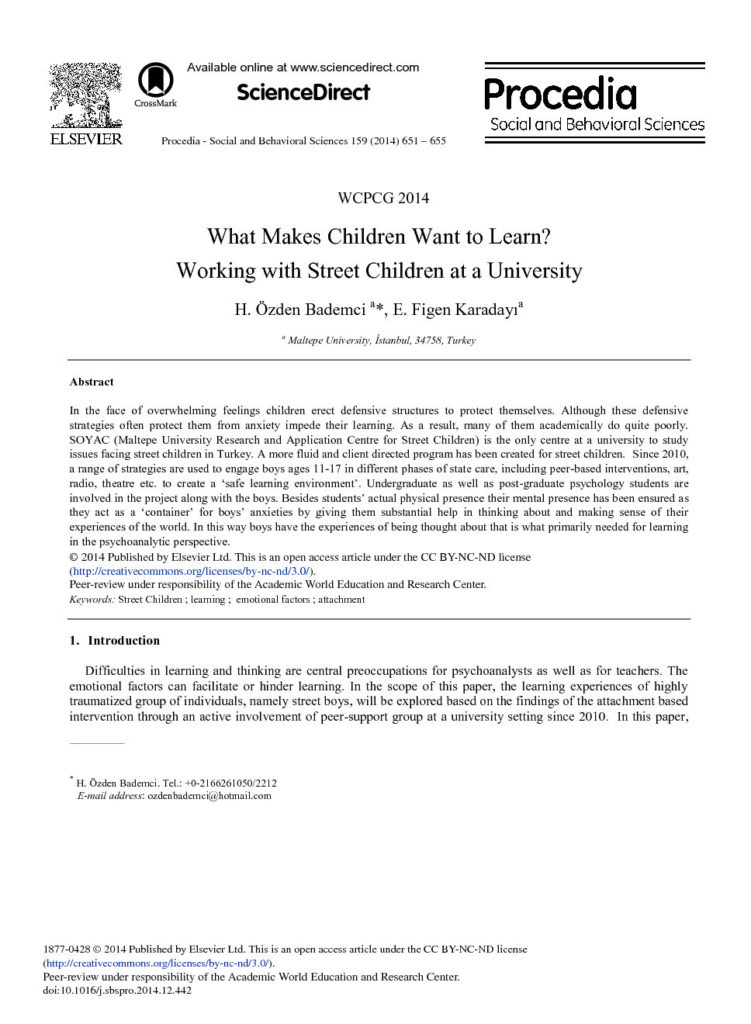
What Makes Children Want to Learn? Working with Street Children at a University
Downloads
Summary
This article is published in Procedia – Social and Behavioral Sciences, and is distributed under a Creative Commons License.
In the face of overwhelming feelings children erect defensive structures to protect themselves. Although these defensive strategies often protect them from anxiety impede their learning. As a result, many of them academically do quite poorly. SOYAC (Maltepe University Research and Application Centre for Street Children) is the only centre at a university to study issues facing street children in Turkey. A more fluid and client directed program has been created for street children. Since 2010, a range of strategies are used to engage boys ages 11-17 in different phases of state care, including peer-based interventions, art, radio, theatre etc. to create a ‘safe learning environment’. Undergraduate as well as post-graduate psychology students are involved in the project along with the boys. Besides students’ actual physical presence their mental presence has been ensured as they act as a ‘container’ for boys’ anxieties by giving them substantial help in thinking about and making sense of their experiences of the world. In this way boys have the experiences of being thought about that is what primarily needed for learning in the psychoanalytic perspective.
Discussion
Users can discuss this report and make suggestions for future updates. You must be signed in to submit a comment.
No comments
Join the conversation and
Become a Member Existing member loginbecome a member.